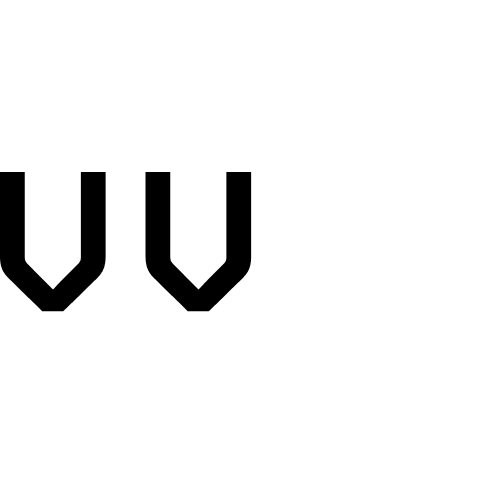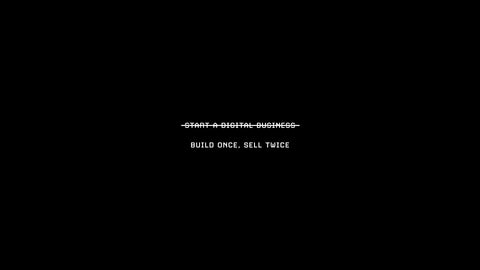Learning how to do your own SEO is a great way to upskill, save money, and ensure that any SEO work carried out on your website is completed to a high standard.
Here at Visualize Value, we take care of all of our own SEO efforts, following the SEO strategies we designed in our dedicated SEO course, Compound Content.
Since focusing on SEO, we have seen an explosion in our search engine rankings and visibility.
Check out this snapshot from Google Search Console showing a 45x increase in Visualize Value search engine impressions from organic search over the last 6 months.

Learning to do your own SEO can open up a lot of opportunities.
Once you understand the mechanisms for optimizing websites for organic search, you are equipped with the tools, tactics, and information that many site owners use to drive millions of dollars in revenue on the internet.
Before we get into it, let's set some context.
What is SEO?
SEO (search engine optimization) is the process of optimizing your website and content to rank in search engines.
Every day, search engines like Google, Bing, and Yahoo handle billions of search queries from people looking for high-quality resources (websites) on the internet.
It's the role of search engines to direct these people to websites that provide them with the information, products, and services that they're looking for.
The main tasks that SEO experts focus on to optimize search engine rankings include keyword research, creating high-quality content, technical SEO, and building authoritative backlinks to site.
The result?
When carried out effectively, search engine optimization can lead to your website ranking on page #1 of Google (and other search engines) - resulting in thousands (or millions) of high intending new potential customers.
Why is it important to do your own SEO?
Learning to do your own SEO can be a great way to save money, learn a new skill, and sense-check that your SEO has been completed to a high standard.
It can be very expensive to outsource your SEO efforts to SEO agencies and freelancers.
The cost of outsourcing your SEO strategy and implementation to a reputable SEO firm will likely cost thousands of dollars per month.
And without knowledge of what good looks like, how do you know if the strategy being implemented is the right one?
What's more, no one knows your business in the same way that you do.
If you design your own SEO strategy, taking care of essential SEO tasks like keyword research, genrating SEO content ideas, and link building then you will ensure that the work is completed to a high standard.
Check out these top 10+ tips and tactics that will take your DIY SEO knowledge to the next level, setting you on a path to success.
Identify your existing search engine performance
The first step in designing your own DIY SEO strategy is to understand how your website is already performing in terms of driving organic traffic.
There is a range of free and paid tools that you can use to see what keywords your website ranks for, and what position in the SERPs (search engine results page) your website is ranking.
Start by ensuring that you have an effective tracking solution in place on your website.
Tools like Google Analytics show you how much traffic lands on your website every day, and how much of that traffic is driven by search engines.
Check out this snapshot from our Google Analytics implementation.

While we're driving the majority of traffic from Organic Social, we can see that Organic Search is making up more of our overall traffic.
In addition, you can use SEO tools like Semrush or AHREFs to understand how your website is performing in search engines specifically.
Here is a snapshot from Semrush, showing Visualize Value's trailing SEO performance.

We can see that Visualize Value currently ranks on 2.3k different keywords, and drives the majority of traffic from brand related search terms.
However, you can clearly see the huge changes in the organic keyword trend since we started focusing on SEO back in July 2022.
Semrush also shows us the top organic keywords that VV is ranking on, as well as the most recent changes in ranking position.

It's easy to drill down further, in order to examine which keywords are driving the majority of organic traffic, which will form the basis for our keyword research tasks - where we analyze other relevant search queries that we can target.

Setting an effective performance benchmark and knowing where to start is always an important first step when designing your own SEO strategy.
By using analytics tools like Google Analytics, alongside dedicated SEO tools, you can get an accurate snapshot of your current performance in order to see where you can improve.
Run your first SEO site audit
In addition to analyzing your existing search rankings, it's really important to understand how healthy your site is from an SEO perspective.
Google, along with other search engines consistently releases guidelines on how it views the quality of websites both in terms of content value and user experience.
If your website is slow to load, does not include a secure connection, and has a lot of poorly optimized image elements, then this is likely to have a negative impact on your website rankings.
In order to set yourself off on the right path, it's worth checking whether there are any obvious issues that you need to address.
SEO tools like Semrush and AHREFs provide SEO site audit functionality on all of their introductory plans.
These audits work by crawling your website in the same way that Google would do, and presenting back to you the result in an easy-to-understand health score.
Here is the output from our most recent SEO audit in Semrush.

While our overall Site Health is good (sitting at 88%), we have 2 errors that need to be addressed, as well as 132 warnings we should focus on.
Here is an output from our Warnings report to give you further context.

It's a good idea to run a report early in your SEO process and work on fixing errors and warnings that your SEO tool suggests.
In addition, you should optimize your website against the following Google Core Web Vitals guidelines.
These guidelines test things like how long it takes your website to render elements displayed to users, how fast the browser responds to your website, and whether your website content shifts when it is loaded.
Google offers an easy-to-use, free tool called PageSpeed Insights that allows you to test your pages against Core Web Vitals metrics.
Here is a snapshot of a recent test on one of our new blog posts.

If you are seeing that your key pages are failing these tests, it's worth taking advice from Google using the same report to address the issues.
Implement Google Search Console
In addition to using analytics and SEO tools, it's worth implementing Google Search Console from the get-go.
Google Search Console is another free tool offered by Google that allows you to audit your existing SEO performance, and identify any errors that might be impacting your search rankings.
Using the Search Results tab, you can understand how often your website is viewed in Google, how many times it is clicked on, as well as the click-through rate, and average position.
It's easy to split the data by specific page or search query, and look at performance for certain date ranges, devices and countries.
Here is a snapshot from our own Google Search Console implementation.

And another showing search query performance for our homepage.

Using Google Search Console, you can also submit a sitemap (we recommend doing this asap), and index new pages as and when they launch.
Using the Experience section in GSC, you can also identify whether there are any performance issues that need to be addressed and whether your pages are passing Core Web Vitals tests at scale.
Alongside the keyword research tool we use to find new search topics, Google Search Console is our most used and important SEO tool for measuring our ongoing SEO performance.
Keyword research and evaluating search demand
Once you have a good understanding of how your website is currently performing, the next step is to start assessing what the wider SEO opportunity looks like for your business.
And that means understanding existing search demand and the wider keyword landscape.
Keyword research is the process of identifying keywords (search terms) that people are searching for, that could be relevant to your business, products, and services.
For example, here at Visualize Value, we help entrepreneurs build businesses online.
As such, when we complete keyword research, we are looking for high-volume keywords and topics that new potential customers are searching for, relevant to our overarching objective - to help entrepreneurs build online.
If you were looking for the content on this web page, it's likely that you would have searched for a keyword like 'DIY SEO', "How to do SEO yourself', or 'How to do SEO on your own'.
Using keyword research tools, we can find what people are searching for relevant to this area of search demand, and then create content and webpages that meet this search demand from an informed viewpoint.
Check it out.

If you are looking to use keyword research to design an effective SEO content strategy, then keyword research is a vital step in the process.
We unpack the process entirely in our dedicated SEO course, Compound Content (using follow-along videos).
Analyze competitors
Another important step connected to researching your organic search niche, is to analyze your competition.
Keyword research tools like Semrush and AHREFs allow you to analze any website domain in order to assess how it is performing in organic search.
This includes estimated organic traffic, organic traffic value, number of backlinks, as well as the top organic pages that drive the majority of value for that website.
This is powerful information because it allows you to analyze and track which content and pages are driving the most value for your competition.
Once you know this information for one competitor, it's easy to replicate this process to map entire search niches.
Imagine you are looking to create content for the search term, 'best table tennis paddle'.
First, let's check out the addressable monthly search volume in the US.

Next, let's take a look at who is already ranking for this search term.

Taking the top ranking search result, first we can analyze that websites overall organic search performance.

And following that, the we can analyze the other organic pages that they rely on to drive high intending organic search traffic to their website.

Use competitive intelligence data to map search niches and prioritize how you shape your SEO content generation efforts.
Optimize on-page SEO elements
On-page SEO elements like your title tags and meta descriptions are useful SEO elements that you can use to inform Google on what topic areas your content covers.
What's more, when someone searches for a keyword that you're looking to target, it's your title tag and meta description that they'll see when analyzing what site to click on.
That means it's important to create titles and meta descriptions that are informative, include the keywords your wish to target (without keyword stuffing), and that will entice new users onto your website.
Here is an example of the title tag and meta description we are using for our SEO content writing article.

SEO title tags should sit between 50-60 characters in length. They should outline what your content is about, and include the main keyword that you're looking to target.
Meta descriptions should sit between 155-160 characters in the length, and broadly follow the same structure as your title tags - mentioning the keywords you are looking to target, while aiming to entice new users on your website.
Ensure that all of your web pages have clearly defined title tags and meta descriptions.
Not only will this increase click through rates from Google search results onto your website, but it will help you establish and clearly define the purpose of each web page and how it contrbutes to your overarching topic areas.
Develop your SEO content strategy
Once you have a clear understanding of your overall organic search performance, and a clear picture of the top target search terms in your niche, you are in a good position to start designing your SEO content strategy.
This is the process of planning what content you should produce to drive new high intending visitors onto your website from organic search.
When you create new content, each individual piece of content should be designed to rank for one specific keyword group that you identify.
For example, the content you are reasing relates to 'learning SEO'.

Each piece of new content that you procude can then be linked to another relevant piece of content that targets another keyword group in your overarching topic area.
For example, within this content, we link to our SEO content writing tips, our review of the best keyword research tools, and our guide to creating an SEO content strategy.
As new content is continually produced and linked together, this collective content slowly forms a topic cluster which becomes an authority on the overarching topic.

We dive into this process more within Compound Content.
Start creating content for organic search
SEO content writing is the process of designing content that is intended to rank for the search terms you identify during your keyword research process.
Effective SEO content is well structured, includes a mix of target keywords and contextually relevant keywords (without keyword stuffing), and is fundamentally designed for people, before search engines.
Meaning, it is well researched, easy to read, and as informative as possible about the subject area you are covering.
Like other areas of SEO, Google has created helpful content guidelines that you can follow to ensure that you are adhering to best practise when designing your search content.
Our SEO content writing tips also run through how to avoid creating duplicate content, thin content, and content that fails to meet Google's best practices.
Audit your internal links
Internal linking is the process of linking your web pages and content together in order to improve user experience.
If someone is interested in a specific page on your website, it's highly likely that they will also find value in other pages and content on your site.
Effective internal linking creates overarching topic clusters which Google perceives as highly authoritative.
Ensure that your pages and content are linked together effectively, and that new content is not orphaned (meaning that is has no other pages linking to it).
We use SEO tools like Screaming Frog to audit our website structure, and sense check which pages link to others in our sitemap.

This snapshot from Screaming Frog shows all of the inlinks to our rank tracking tools page.
We can easily scan through and sense check that other pages in our topic cluster link to this page, and if there are gaps, look to fill them.
Likewise, it's just as easy for us to check the outlinks from this page to audit in both directions.
Drive backlinks to your website
Alongside high quality, contextually relevant search content, building backlinks to your website is seen by Google as the top ranking factor for SEO.
That's why site owners spend so much time focusing on link building.
The term backlink refers to any time another website links to a page on your website.
That could be your homepage, or a specific piece of content, or image.
Backlinks act as a vote of confidence for your website, indicating to search engines that you are a popular and credible source of information in your niche.
Here is a snapshot of Visualize Value's backlink profile.

At the time of writing, we have over 1.1k referring domains linking to our website, creating a total of 15.6k backlinks.
The overall toxicity score of our backlink profile is low. This means that high quality websites are linked to Visualize Value.
SEO tools like Semrush and AHREFs allow you to audit your backlink profile, and spot which domains are linking to other websites in your niche.
Here's our review of the best link building tools out there.
Work with the best SEO tools
If you are looking to take your SEO to the next level, we'd recommend investing in SEO tools to help support your journey and speed up your route to success.
While there are some excellent free SEO tools that you can use to get your SEO strategy off the ground, paid SEO tools will help you carry out core SEO tasks faster and more accurately.
We have compiled lists of the best SEO tools, including keyword research tools, competitor analysis tools, SEO content writing tools, and SEO reporting tools to help you make sense of the SEO tooling landscape.
For reference, here at Visualize Value we use a mix of Semrush and AHREFs for keyword research and SEO audit tasks (supported by Screming Frog).
For SEO content writing, we use SurferSEO, and for auditing our backlink profile and finding new backlink opportunities we use Majestic.
And for tracking and monitoring performance, we use Google Analytics and Google Search Console daily.
Measure your SEO performance over time
In order to measure how effective your SEO strategy is at driving new organic traffic, it's important to constantly check in on your progress.
But remember, optimizing for SEO is a long-term play. It could take months, or even years to see the true impact of your SEO efforts.
But if you are consistent, patient, and deliberate in your actions, SEO can be your most cost-effective, and high performing marketing channels.
We use Google Search Console to measure the amount of impressions we are receiving on search engine results pages, as well as clicks, click through rates, and average search position.
We also track the value of our organic pages in tools like Semrush and AHREFs, as well as how well we are ranking on specific target keywords.
This process allows us to spot our highest performing pages in order to make further optimizations.
We can also spot where certain pages are ranking on related keywords that might warrant their own dedicated cluster page.
Here is a snapshot from our Google Search Console showing trailing 3 month organic search performance, compared to the prior period.

The SEO strategies outlined in Compound Content (which we started implementing in July) are starting to have a big impact on our organic search performance.
What next? Step one for starting to do your own SEO
Start designing and implementing your own DIY SEO strategy today.
Join other entreprenuers and small business owners who are reducing their marketing budget by driving more of their target audience from organic search.
And if you are still unsure how best to implement these techniques, check out our dedicated SEO course, Compound Content.
Compound Content has served over 1k students looking to learn SEO from the ground up, and is rated 5-star by our customers.
Related reviews of other SEO tools and courses









